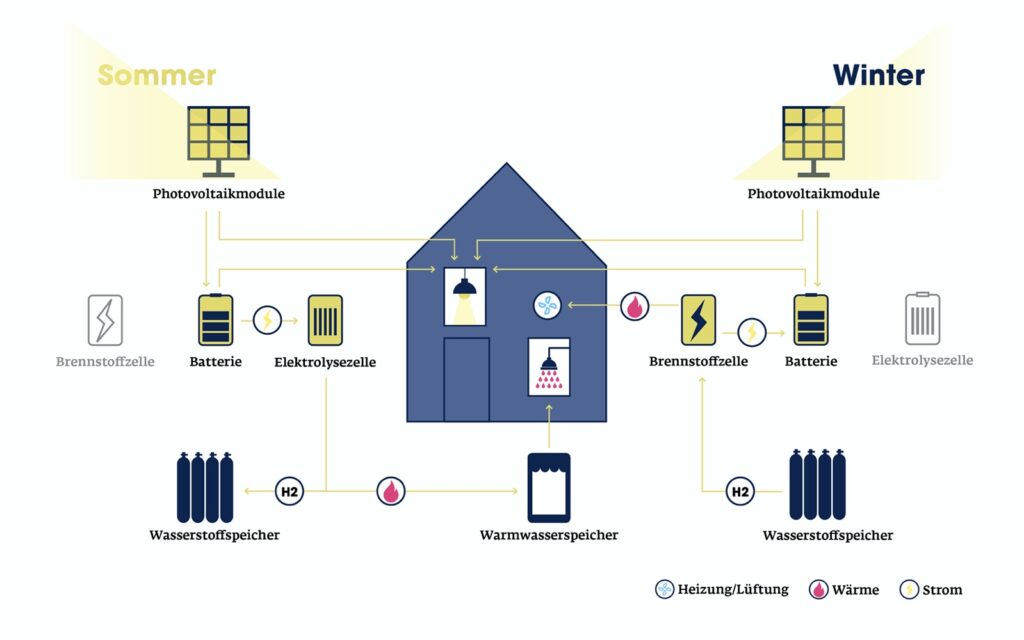Hibernate with solar power

In a settlement in Hausen am Albis, EKZ (Electricity Works of the Canton of Zurich) is building one of the first hydrogen storage facilities in Switzerland. So the summer electricity is also available in winter.
Buildings are increasingly becoming small power plants, since photovoltaic modules capture solar energy on more and more roofs. But the sun doesn't always shine and the demand for electricity fluctuates greatly over the year. Storage technologies are therefore in demand. Geothermal probes provide heat in winter, but no electricity. Batteries, on the other hand, make technical sense, but they are short-term storage devices and therefore not seasonal electricity storage devices. With the Seebrighof development in Hausen am Albis, the electricity works of the canton of Zurich are therefore taking a different, new approach. The 28 apartments in the attached farmhouse and the new building draw solar energy from the roof of the house. So that this is also available in winter, EKZ is installing a hydrogen storage facility – one of the first of its kind in Switzerland.
If, on summer days, the solar system delivers more electricity than the residents consume, it does not get back into the grid. Instead, the power-to-gas plant uses it to make hydrogen. In winter, when the energy requirement is higher, the system converts the hydrogen back into energy. "In the fuel cells of the plant, around 55 percent of this electricity is generated," explains Georg Putzi, Product Manager Energy Contracting at EKZ. The remaining 45 percent of the stored energy escapes as waste heat, which heats the building.
Seasonal electricity storage offers several advantages. The system is environmentally friendly because it only needs tap water and locally produced solar power. The public power grid is relieved. A battery compensates for short-term fluctuations, so the P2G system can be operated more efficiently.

The system in Hausen am Albis is based on a standardized concept that EKZ developed. This makes the technology cheaper, more adaptable and scalable. It can also be used for larger residential complexes or retrofitted in old buildings. "If there is already a solar system with an association for self-consumption (ZEV), the hydrogen technology can be supplemented," says Putzi. The technology can also be easily combined with heat pump systems, as in Hausen am Albis. In winter the environment supplies the heat (e.g. geothermal probes, groundwater or air), the hydrogen storage system supplies the electricity.
The P2G system has no particular influence on the building services; it just needs space near the heating center. In contrast, the gas storage facility is architecturally relevant. For safety reasons, it must be positioned outside the building so that the volatile hydrogen can escape in an emergency. The gas storage consists of gas cylinders, which are grouped as a bundle and covered with a housing that the architects can adapt.
With the system, the client increases the energy self-sufficiency and saves electricity costs in winter. "The P2G system is currently not yet cost-covering," says Georg Putzi. If the electricity prices rise in the future and the costs for the system fall, it will become significantly more economical. “Such pioneering work is important in order to gain experience and develop the market further,” says Putzi. Switzerland currently imports a lot of electricity in winter. If Germany switches off the coal-fired power plants, the winter shortage will be even greater. Storage technologies based on gases and liquids are therefore given high priority in the Federal Council's Energy Strategy 2050. With a P2G system, the buildings can help alleviate the challenges in terms of power supply in winter.
